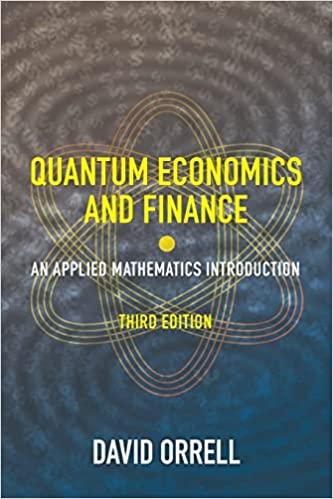3. (5 p.) Consider an individual with before tax) income, equal to $2000. The income tax rate is 0.2. This individual may try to evade taxes. He knows that he can be audited with probability 0.25. If he is audited and he has evaded taxes the cheating will be revealed with probability 0.8. If person is caught in attempt to evade taxes, he is subject to fine of 0.4 for each dollar that he has not reported. This penalty is an addition to the tax that should have been paid. (a) Define (verbally) contingent commodities, derive the budget constraint and present it graphically. (Explain every step carefully). (b) Assume that individual is risk neutral. Will tax evasion take place? Provide algebraic solution, graphical solution and intuitive explanation. (c) Now, assume that individual is risk averse. Find all fine rates that will effectively prevent tax evasion. Graph is not required! (d) Suppose that individual is risk averse and his preferences are represented by expected utility function with Bernoulli utility function u(x)= In x. Setup the optimization problem. Find the value of income reported by this individual. Graph is not required! (e) "If agent is a risk-lover, then there is no fine rate that will prevent tax evasion." True or false? Explain. (1) Consider a risk averse agent and suppose that a partial tax evasion takes place. How would an increase in probability of audit affect the amount of income reported? Only algebraic solution is expected! Hint: use FOC 3. (5 p.) Consider an individual with before tax) income, equal to $2000. The income tax rate is 0.2. This individual may try to evade taxes. He knows that he can be audited with probability 0.25. If he is audited and he has evaded taxes the cheating will be revealed with probability 0.8. If person is caught in attempt to evade taxes, he is subject to fine of 0.4 for each dollar that he has not reported. This penalty is an addition to the tax that should have been paid. (a) Define (verbally) contingent commodities, derive the budget constraint and present it graphically. (Explain every step carefully). (b) Assume that individual is risk neutral. Will tax evasion take place? Provide algebraic solution, graphical solution and intuitive explanation. (c) Now, assume that individual is risk averse. Find all fine rates that will effectively prevent tax evasion. Graph is not required! (d) Suppose that individual is risk averse and his preferences are represented by expected utility function with Bernoulli utility function u(x)= In x. Setup the optimization problem. Find the value of income reported by this individual. Graph is not required! (e) "If agent is a risk-lover, then there is no fine rate that will prevent tax evasion." True or false? Explain. (1) Consider a risk averse agent and suppose that a partial tax evasion takes place. How would an increase in probability of audit affect the amount of income reported? Only algebraic solution is expected! Hint: use FOC








